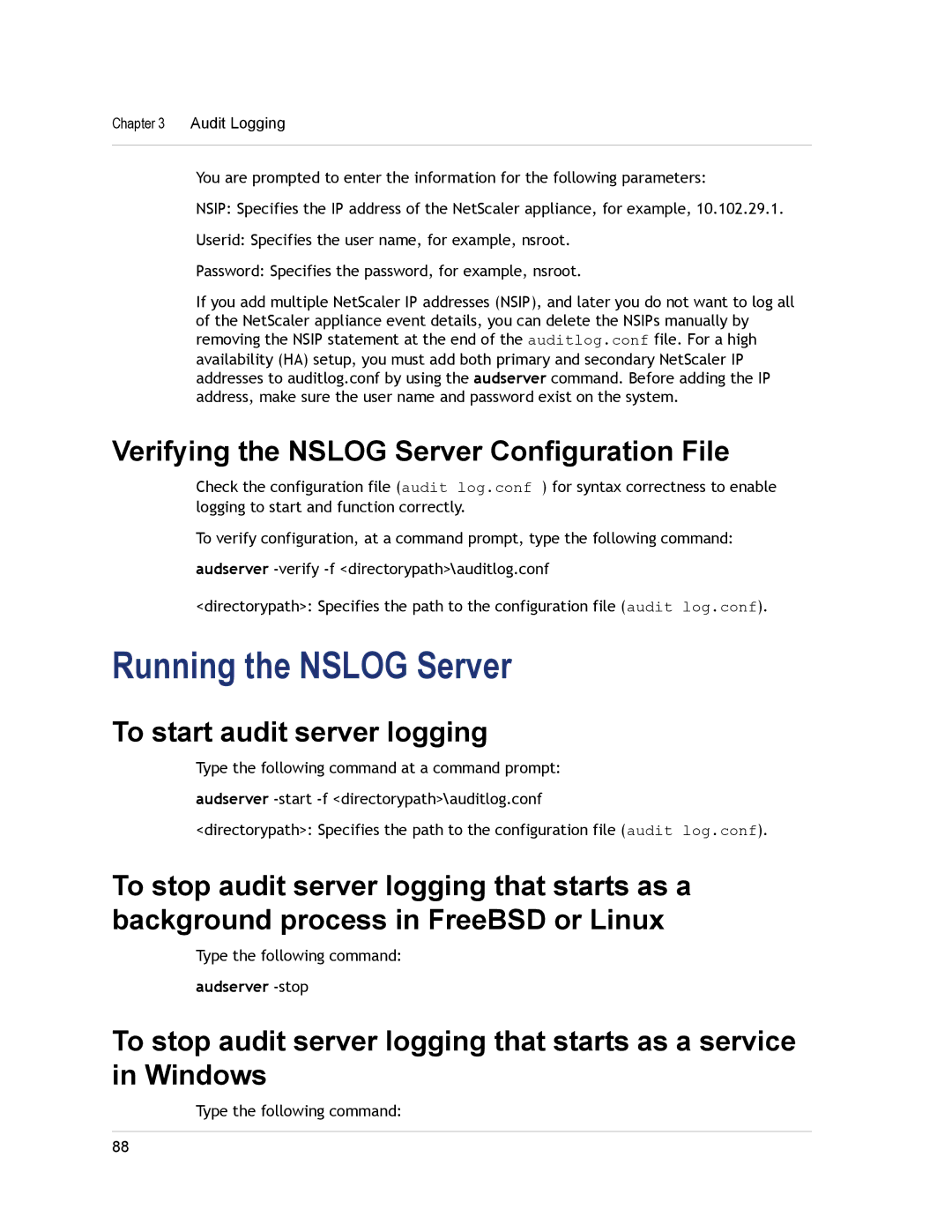
Chapter 3 Audit Logging
You are prompted to enter the information for the following parameters:
NSIP: Specifies the IP address of the NetScaler appliance, for example, 10.102.29.1.
Userid: Specifies the user name, for example, nsroot.
Password: Specifies the password, for example, nsroot.
If you add multiple NetScaler IP addresses (NSIP), and later you do not want to log all of the NetScaler appliance event details, you can delete the NSIPs manually by removing the NSIP statement at the end of the auditlog.conf file. For a high availability (HA) setup, you must add both primary and secondary NetScaler IP addresses to auditlog.conf by using the audserver command. Before adding the IP address, make sure the user name and password exist on the system.
Verifying the NSLOG Server Configuration File
Check the configuration file (audit log.conf ) for syntax correctness to enable logging to start and function correctly.
To verify configuration, at a command prompt, type the following command:
audserver
<directorypath>: Specifies the path to the configuration file (audit log.conf).
Running the NSLOG Server
To start audit server logging
Type the following command at a command prompt:
audserver
<directorypath>: Specifies the path to the configuration file (audit log.conf).
To stop audit server logging that starts as a background process in FreeBSD or Linux
Type the following command:
audserver -stop
To stop audit server logging that starts as a service in Windows
Type the following command:
88
